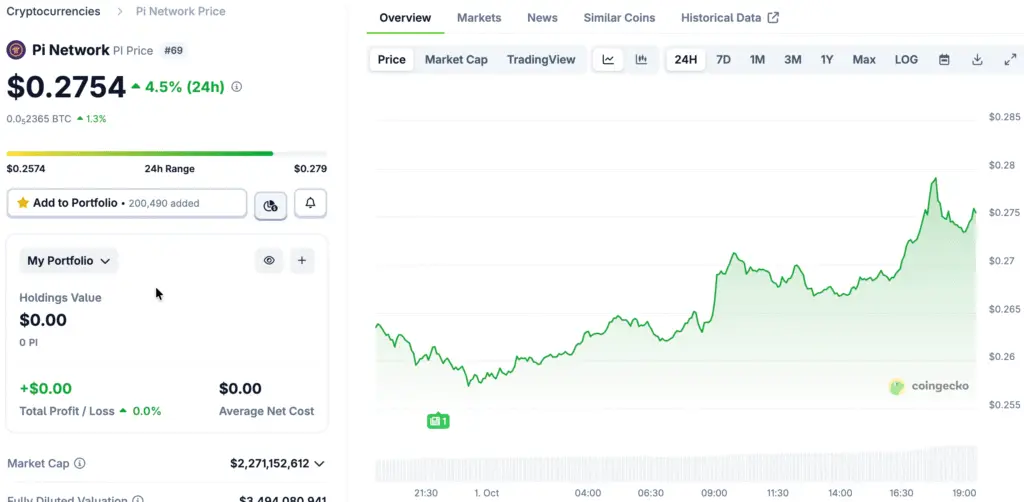Pi Network Introduces Testnet2 v23 to Enhance Platform Resilience
Pi Network has finally released Testnet2 v23, which is a big step toward getting the mainnet ready. The upgrade makes a lot of important changes to the backend that are meant to protect the ecosystem from fraud and improve staking mechanics for long-term stability.
This new release shows that Pi Network is still dedicated to building a strong and reliable digital economy. Developers want to make the project’s eventual mainnet transition stronger by adding anti-fraud detection and staking optimizations.

Enhanced Anti-Fraud Measures Target Counterfeit Tokens Early
The new update for Pi Network has made fraud prevention a major theme. The new backend architecture is all about finding and stopping fake Pi transactions before they can spread throughout the ecosystem. This proactive approach is meant to keep the token supply safe and protect future users from bad behavior.
The Pi Core Team stressed that these steps are very important for making the economy safe. Pi is addressing possible risks early by putting in place strong protections during the testnet phase. This builds trust and makes the system more resilient before it goes live on the mainnet.
Staking Upgrades Encourage Long-Term Participation and Network Stability
Pi Network has made real improvements to its staking mechanisms, in addition to protecting against fraud. In Pi’s economic model, staking is very important because it serves as both a reward system and a way to govern. The new v23 structure strikes a balance between liquidity flexibility and incentives for long-term token lock-ups, which will get more people involved in the community.
These changes are very similar to what Pi wants for a digital ecosystem that lasts. By improving staking mechanics, the platform lowers speculative churn and encourages behaviors that support network stability, governance participation, and aligned economic incentives among long-term stakeholders.
Recommended Article: Crypto Market News: Pi Network Price Prediction As Cardano and Magax Top Trending Crypto
Community Pushes For Development Of A Dedicated Pi Exchange
Along with the technical improvements, more and more people in the community are talking about starting a native Pi exchange. People who are excited about Pi say that the high number of wallets already in use shows that there is still room for improvement in the internal liquidity infrastructure. Setting up a dedicated exchange could directly capture user activity, which would make the company less reliant on outside platforms.
The Pi Core Team hasn’t said anything about plans, but the community’s support keeps growing. A native exchange would be good for Pi holders in a number of ways, such as making it easier for them to trade tokens and do other business with them in the future.
Domain Auction Sparks Debate Over Governance and Fairness
The recent “.p” domain auction has sparked a lot of discussion in the community about fairness and how things should be run. Some members say that the bidding process is unfair and that direct registration would be a better way to distribute the items. Some people defend the auction by saying that it makes good use of limited digital real estate.
This argument shows how hard it is for Pi to run things as it grows. It is still hard to strike a balance between getting people involved in the community and making good decisions, especially now that the network is testing out new ways to allocate valuable ecosystem resources.
Progress Toward Mainnet Highlights Growing Community Expectations
The release of Testnet2 v23 is a big step forward for Pi Network on its way to fully activating the mainnet. Better fraud protection, staking improvements, and ecosystem debates all show that the platform is growing up and getting ready for more people to use it.
As these basic parts come together, community expectations are rising quickly. Pi’s credibility and long-term competitiveness in the larger crypto space will depend a lot on its ability to provide secure infrastructure, clear governance, and useful exchange solutions.
Strategic Upgrades Position Pi Network for a Secure Mainnet Future
The most recent updates to Pi Network show how it has changed from a mobile mining experiment to a serious competitor in the digital economy. The anti-fraud systems, staking improvements, and community initiatives are all part of a plan to build trust, usefulness, and resilience before going global.
As Pi moves closer to mainnet, the success of these projects will decide if the project can move from testnet innovation to real-world use. Testnet2 v23 is a big step forward for its global community, but it also comes with governance problems that come with fast ecosystem growth.














